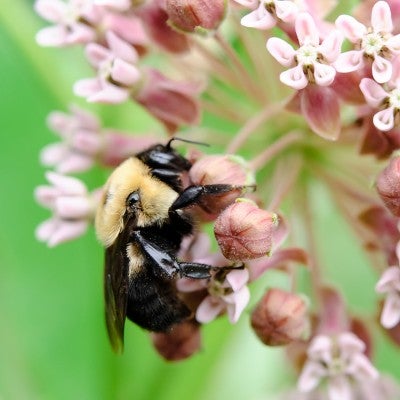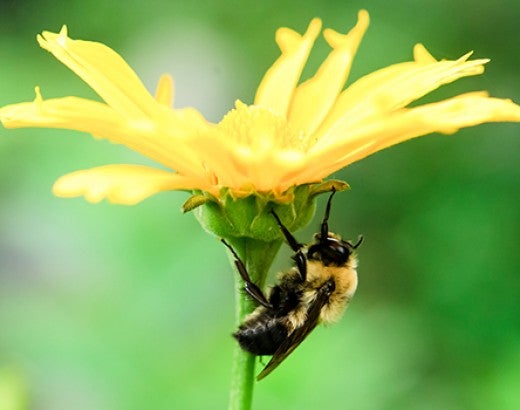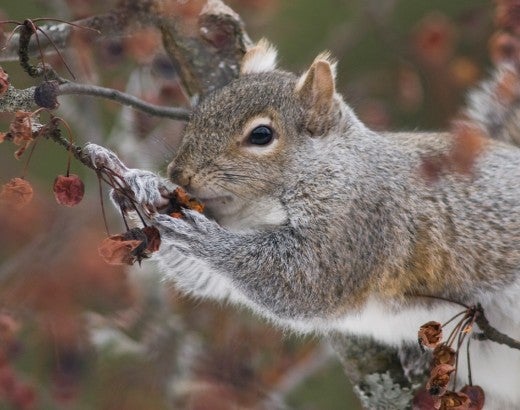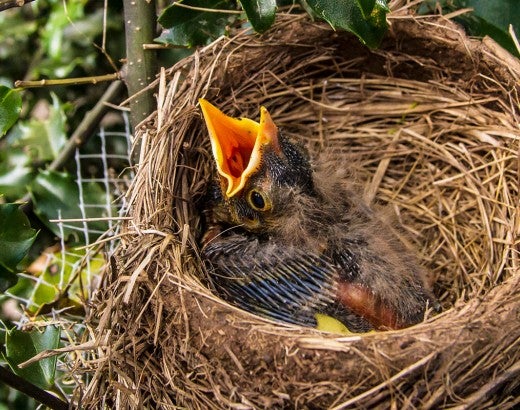Yet these essential pollinators are under threat—from pesticides, habitat loss and disease. That’s bad news not just for the bees, but for countless birds and other wild animals who depend on the fruits and seeds of their labors. If you look at all the species (including humans!) that rely on bees for a big part of their diets, it’s obvious that these buzzing insects deserve our protection.
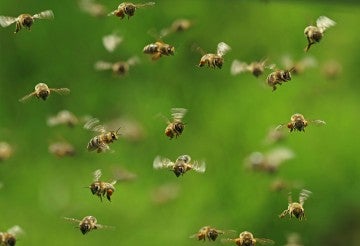
North America has nearly 4,000 native bee species, including types of bumblebees and sweat, miner, carpenter, mason, squash and leafcutter bees. Unlike the hive-defending honey bee (who hails from Europe), most native bees lead solitary lives and aren’t aggressive to people—and many are stingless.

A bee’s tongue size (which varies among species) determines whether they can reach the nectar in a particular type of flower. To feed as many bees as possible, plant a variety of fruits, vegetables, herbs, shrubs, trees and wildflowers that are free of harmful neonicotinoids.
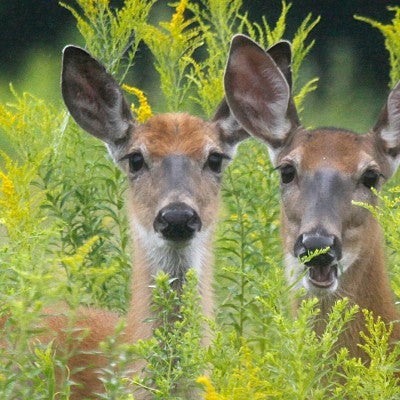
Every day, more and more wildlife habitats are lost to the spread of development. Your gift can help create more humane backyards to protect all animals.
